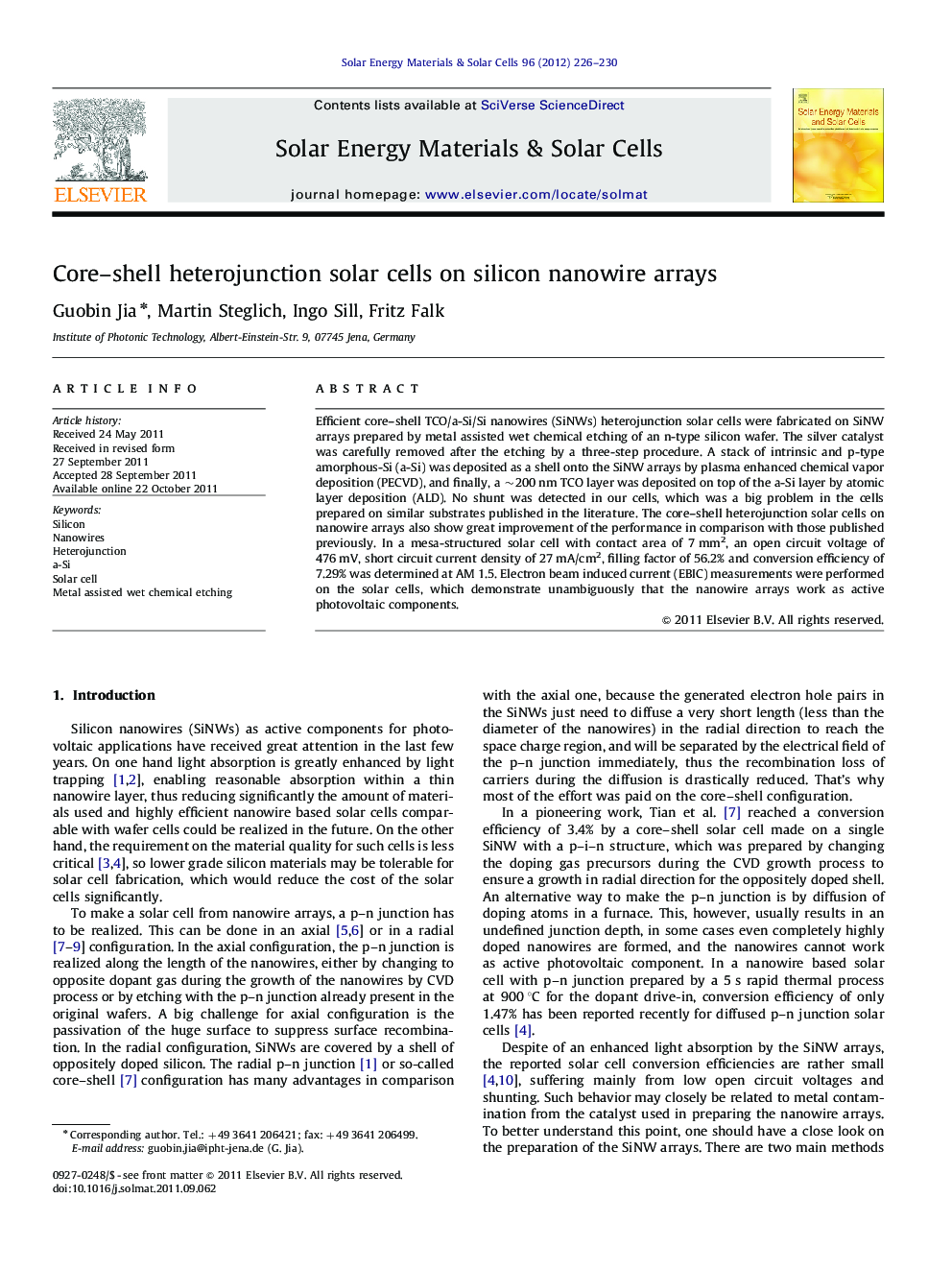| Article ID | Journal | Published Year | Pages | File Type |
|---|---|---|---|---|
| 79490 | Solar Energy Materials and Solar Cells | 2012 | 5 Pages |
Efficient core–shell TCO/a-Si/Si nanowires (SiNWs) heterojunction solar cells were fabricated on SiNW arrays prepared by metal assisted wet chemical etching of an n-type silicon wafer. The silver catalyst was carefully removed after the etching by a three-step procedure. A stack of intrinsic and p-type amorphous-Si (a-Si) was deposited as a shell onto the SiNW arrays by plasma enhanced chemical vapor deposition (PECVD), and finally, a ∼200 nm TCO layer was deposited on top of the a-Si layer by atomic layer deposition (ALD). No shunt was detected in our cells, which was a big problem in the cells prepared on similar substrates published in the literature. The core–shell heterojunction solar cells on nanowire arrays also show great improvement of the performance in comparison with those published previously. In a mesa-structured solar cell with contact area of 7 mm2, an open circuit voltage of 476 mV, short circuit current density of 27 mA/cm2, filling factor of 56.2% and conversion efficiency of 7.29% was determined at AM 1.5. Electron beam induced current (EBIC) measurements were performed on the solar cells, which demonstrate unambiguously that the nanowire arrays work as active photovoltaic components.
► Efficient core–shell nanowires heterojunction solar cells were fabricated on SiNW arrays. ► Great improvement was obtained with solar cells fabricated on arrays etched by similar way. ► A three-step procedure was developed to clean the metal contamination after the etching. ► Nanowires as active PV component were verified and visualized by EBIC meaurements.
